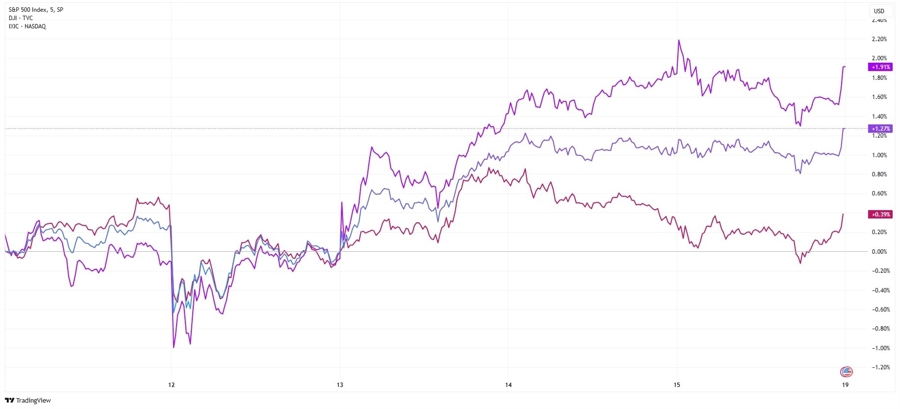The U.S. President’s whirlwind blitz through the bureaucracy, economic policy and geopolitical affairs isn’t slowing down. Trump threatened potential tariffs of around 25% on automobile, semiconductor and pharmaceutical imports. This development added to an already fragile market outlook this week, amid cautious optimism for an end to the conflict in Ukraine — a topic Trump also weighed in on.
On Tuesday night, the President stated he plans to impose 25% tariffs on imported cars, drugs, and chips. The auto industry will be first to feel the impact, with the new tax charges set to take effect on April 2, the day after Trump’s administration is expected to present reports outlining tariff options.
A 25% tariff on imported cars could disrupt the already struggling global auto industry. Trump has long criticized what he considers unfair treatment of U.S. auto exports in foreign markets. The European Union, for example, imposes a 10% tariff on imported vehicles — four times higher than the 2.5% U.S. tariff on passenger cars.
Tariffs on pharmaceutical drugs and semiconductor chips would also start at "25% or higher", substantially increasing further over the next year. However, Trump did not specify when these tariffs would be formally announced, adding that he wants to give drugmakers and chipmakers some time to establish production facilities in the United States to avoid the levies.
Trump also hinted at upcoming announcements from the world's largest companies regarding new investments in the United States, though he did not offer further details.
Beyond their immediate impact on specific industries, these steep tariffs could have far-reaching consequences, potentially driving up prices for consumers and increasing costs for businesses.
Meanwhile, Trump has initiated U.S.-Russia negotiations, marking a potential shift in diplomatic relations. On Tuesday, senior officials from both countries took steps toward a major reset, agreeing to collaborate on ending the conflict in Ukraine, increasing financial investment, and restoring diplomatic ties. The meeting was a striking display of bonhomie after three years of American efforts to isolate Moscow.
In financial markets, the SPX reached its first record high of the year, rising 0.2% and pushing its total market cap past $51 trillion. The Nasdaq Composite and Dow Jones index posted smaller gains, each rising by less than 0.1%.

The late-session rally was driven by investors increasing their bets on utilities, financials and energy companies. Among the S&P 500’s eleven sectors, only three closed in negative territory, while the energy sector led the gains, surging more than 1.4%.
Looking ahead, the Federal Reserve is set to release its latest meeting minutes today. Three weeks ago, Fed Chair Jay Powell reaffirmed that interest rates would remain unchanged, emphasizing a “wait-and-see” approach as officials assess the economic impact of Trump’s policies.
The minutes will offer insight into the Fed’s stance on potential future interest rate cuts, inflation expectations and the broader economic implications of the proposed tariffs.




